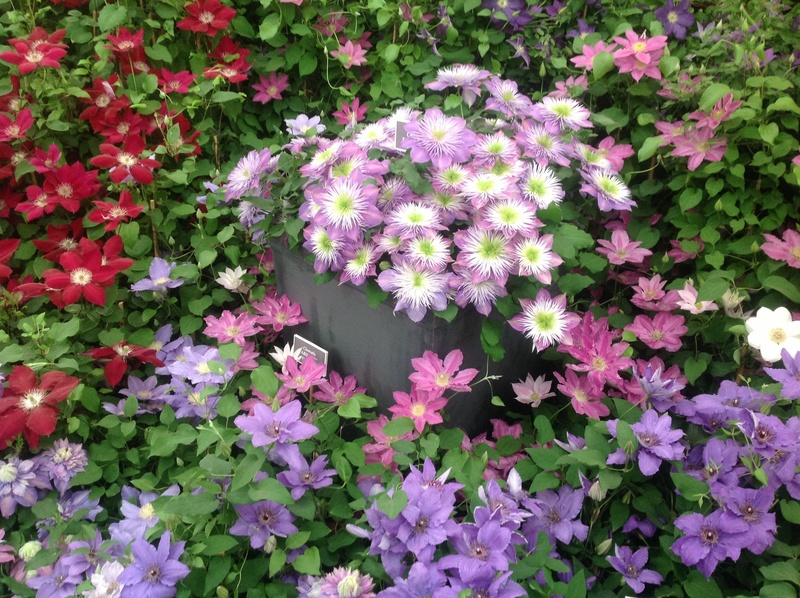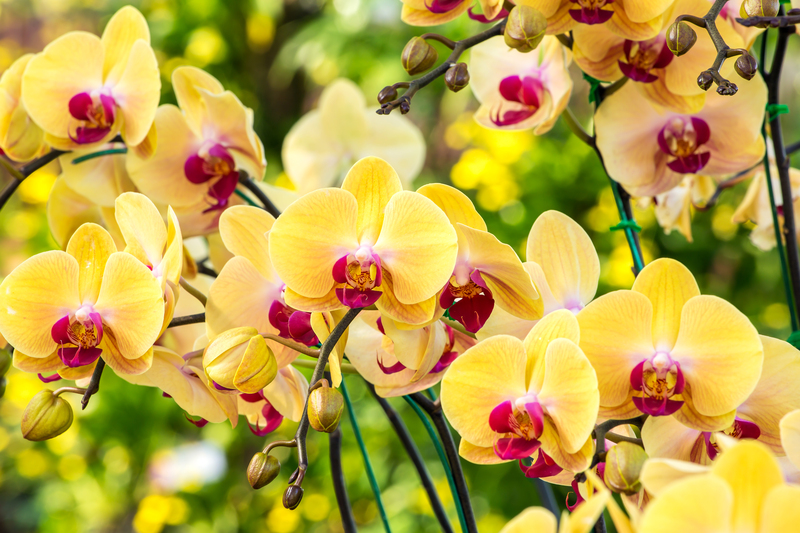Unleash Your Green Thumb with Vertical Gardening
Posted on 31/05/2025
Unleash Your Green Thumb with Vertical Gardening: The Complete Guide
If you're short on yard space but bursting with a love for plants, vertical gardening might be your perfect solution. Vertical gardening is a revolutionary, space-saving way to grow lush greenery even in the smallest of spaces. Whether you have a sprawling backyard or a compact apartment balcony, vertical gardens let you enjoy the therapeutic and aesthetic benefits of gardening without requiring lots of horizontal space. In this detailed guide, you'll discover everything you need to know to unleash your green thumb and transform your surroundings with innovative vertical gardening techniques.

What Is Vertical Gardening?
Vertical gardening is the practice of growing plants upward on structures such as walls, trellises, or specially designed towers, rather than spreading out on the ground. This technique maximizes limited space, creates striking visual effects, and enables urban dwellers to cultivate their own gardens--no matter the size of their home. Vertical gardens are also known as living walls, green walls, or vertical planters and range from simple DIY projects to complex, architect-designed installations.
Benefits of Vertical Gardening
- Space Efficiency: Grow more in less space by utilizing vertical surfaces.
- Improved Air Quality: Plants filter the air, remove toxins, and increase oxygen levels indoors and out.
- Urban Food Production: Harvest fresh vegetables, herbs, and fruits, even in high-rise apartments or small courtyards.
- Aesthetic Appeal: Green walls and plant towers serve as eye-catching focal points in homes and gardens.
- Increased Biodiversity: Provide habitat for beneficial insects, pollinators, and birds in urban areas.
- Insulation: Vertical gardens help moderate temperature and dampen noise, especially when installed on building exteriors.
- Ease of Maintenance: Vertical setups often reduce problems related to pests and weeds, and can be designed for easy watering and harvesting.
Types of Vertical Garden Structures
Before you begin your own vertical garden, it's important to choose the right structure to fit your space, budget, and plant preferences. Here are some popular options:
1. Trellises and Lattices
Trellises are classic supports for climbing plants like peas, beans, and flowering vines. Made from wood, metal, or plastic, they are simple to install along walls or in garden beds.
2. Vertical Planters and Pocket Systems
These modular systems feature multiple pockets or containers arranged vertically. They can be mounted on fences, balcony railings, or interior walls. Felt pocket gardens and stackable planter towers are inexpensive and easy to maintain, making them perfect for growing herbs, lettuces, and strawberries.
3. Living Walls
Also known as green walls, these sophisticated setups use a sturdy, framed structure packed with potting medium and built-in irrigation. You'll often find them in commercial buildings or public spaces, but many DIY versions are available for homes and apartments.
4. Gutter and Bottle Gardens
Repurposing rain gutters, plastic bottles, or pipes into horizontal planters stacked vertically is a fun and eco-friendly vertical gardening idea for small-space growers and creative crafters alike.
5. Hanging Gardens
Moss balls (kokedama), macrame hangers, and baskets filled with cascading plants can create a lush, floating garden effect indoors or outdoors.
Choosing Plants for Your Vertical Garden
Not all plants are suited for growth on vertical surfaces. Select species that thrive in your lighting conditions and have growth habits that fit your chosen structure. Here's a guide to the best vertical gardening plants:
Best Edibles for Vertical Gardening
- Herbs: Basil, thyme, oregano, mint, and chives are compact and easy to grow vertically.
- Leafy Greens: Lettuces, kale, spinach, arugula, and swiss chard fit well in wall pockets and towers.
- Strawberries: Their shallow roots and trailing growth make them ideal for hanging planters and vertical pockets.
- Peas and Beans: These natural climbers love trellises and provide high yields in small spaces.
- Tomatoes, Cucumbers, and Peppers: Small varieties (cherry tomatoes, snack peppers) are highly productive when trained up supports.
Ornamental Plants for Vertical Gardens
- Climbing Vines: Clematis, morning glories, black-eyed Susan vine, and passionflower create stunning walls of color.
- Ferns and Mosses: Perfect for shaded living walls indoors or outdoors.
- Succulents: Low-maintenance and drought-tolerant, succulents are ideal for sunny, dry vertical displays.
- Trailing Plants: Golden pothos, string of pearls, and English ivy create dramatic cascades in hanging planters and wall pockets.
- Annual and Perennial Flowers: Petunias, impatiens, and violas offer continuous color in vertical flower gardens.
How to Start Your Own Vertical Garden
Launching your own vertical gardening adventure may seem daunting, but it's easy with the right steps. Here's a comprehensive, step-by-step guide to help you unleash your green thumb with vertical gardening:
1. Evaluate Your Space
- Sunlight: Observe the amount and direction of sunlight in your chosen spot. Full sun is ideal for most vegetables, while ferns and mosses prefer shade.
- Wind: High-rise balconies can be windy, so select sturdy plants or install windbreaks if needed.
- Weight Considerations: Make sure walls or railings can bear the load of wet soil and plants.
2. Choose Your Vertical Garden Structure
- Budget-friendly DIY planters can be made from old pallets, bottles, or gutters.
- Commercial vertical gardening kits offer modular designs with integrated irrigation.
- Select a structure that fits your space, style, and maintenance preferences.
3. Select the Right Plants
- Mix and match edible and ornamental varieties for year-round interest and utility.
- Group plants by their light and water requirements for simpler care.
4. Prepare Soil and Planting Medium
- Use high-quality, lightweight potting mix for containers, or hydroponic substrates for some modular wall systems.
- Ensure good drainage to prevent root rot.
5. Install Your Vertical Garden
- Secure the structure to your chosen wall, fence, or balcony with appropriate hardware.
- Stagger plants for maximum light exposure and visual impact.
- Install drip irrigation for effortless, even watering, or plan a manual watering schedule.
6. Maintain and Enjoy Your Garden
- Check soil moisture regularly.
- Feed container-grown plants with diluted liquid fertilizer every 2-4 weeks.
- Prune, deadhead, and harvest regularly to encourage new growth.
- Watch for pests and diseases; vertical gardens often have fewer problems than traditional beds, but still require vigilant monitoring.
Top Tips for Thriving Vertical Gardens
For the healthiest and most attractive vertical garden, keep these tips in mind:
- Plan for Watering: Vertical gardens dry out faster than ground-level beds. Install an efficient watering system or commit to daily checks during hot weather.
- Rotate and Refresh: Replace tired annuals with new plantings for ongoing interest. Rotate edible crops for soil health.
- Keep Growth in Check: Train vining plants and trim back rampant growth to maintain form and sunlight exposure.
- Experiment: Don't be afraid to test new species or artistic arrangements--a vertical garden is a living canvas!
- Choose Native Plants Where Possible: They will require less water, fertilizer, and maintenance over time.
Creative Vertical Gardening Ideas
Looking to get inspired? Here are some unique ways to make the most of your vertical gardening passion:
- Palette Planters: Repurpose an old wooden pallet into a vertical herb garden for your patio or kitchen wall.
- Hanging Bottle Towers: String recycled plastic bottles together for a zero-waste wall of greens.
- Living Privacy Screens: Plant fast-growing vines like hops or beans on a trellis for natural seclusion.
- Succulent Picture Frames: Use a shadow box frame filled with succulent cuttings for modern, drought-tolerant art.
- Indoor Moss Walls: Add a touch of tranquility to your office or entryway with a low-light moss installation.
- Rain Gutter Gardens: Mount gutters horizontally on a fence and fill them with compact vegetable, herb, or flower varieties.

Frequently Asked Questions About Vertical Gardening
- Can I do vertical gardening indoors?
Absolutely! Many vertical garden systems are designed for indoor use. Ensure your chosen plants get enough natural or supplemented light, and protect surfaces from water. - What plants work best for beginners?
Herbs, lettuce, succulents, pothos, and ferns are easy to start with. Opt for hardy, compact species as you get the hang of vertical gardening. - What's the best way to water a vertical garden?
Drip irrigation or self-watering systems work very well, especially on larger or hard-to-reach installations. For smaller gardens, water thoroughly and check soil moisture often. - Is vertical gardening expensive?
It doesn't have to be! DIY projects can be extremely affordable, using recycled materials or everyday items. Ready-made systems offer style and convenience at a range of price points.
Conclusion: Transform Your Space with Vertical Gardening
With a little creativity and care, anyone can unleash their green thumb and enjoy the many rewards of vertical gardening. This modern gardening trend makes it easy to grow fresh produce, lush flowers, and dazzling greenery--regardless of available space. From simple indoor herb walls to elaborate outdoor living art installations, the possibilities are endless. Embrace vertical gardening today and watch your surroundings--and your gardening savvy--grow upward!
Ready to get started? Gather your supplies, pick your favorite plants, and transform walls, balconies, or fences into stunning sanctuaries of life. Vertical gardening is not only an eco-friendly choice--it's a fun, rewarding way to bring nature closer, one lovely layer at a time.

